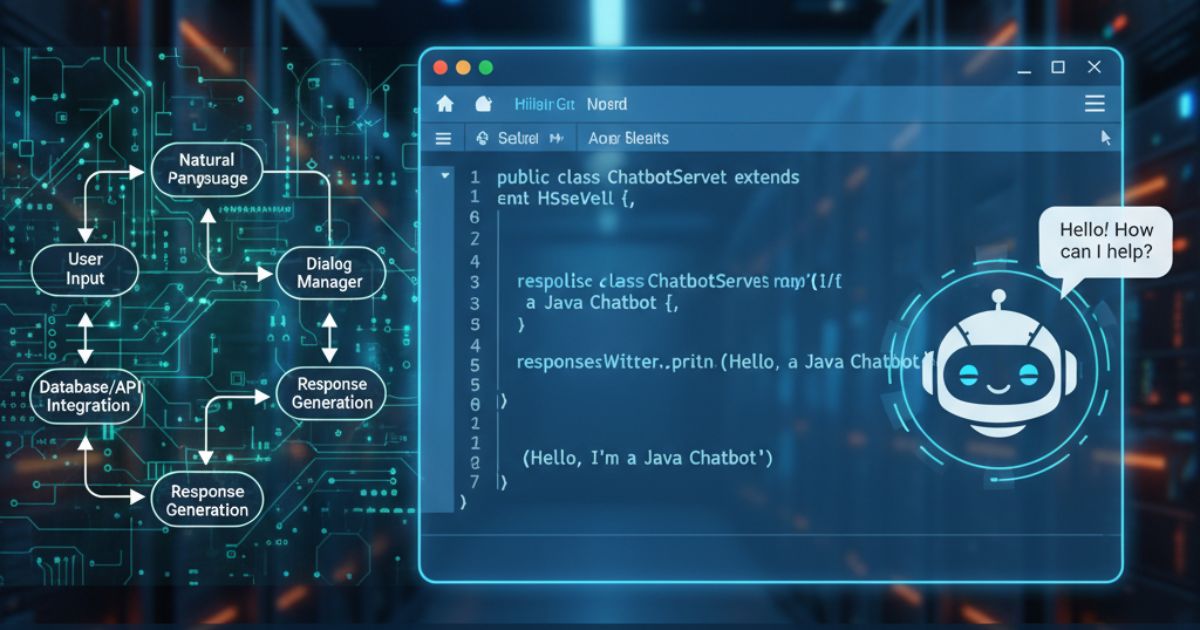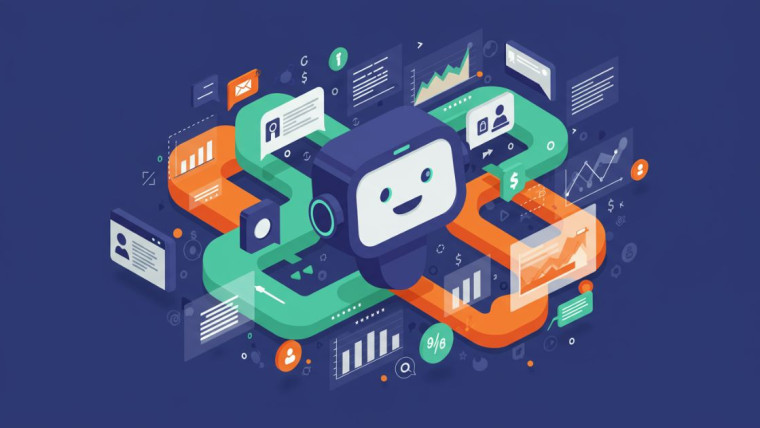Chatbots have begun gaining traction in the digital industry, changing the way businesses conduct online conversations and revolutionizing user interaction with web applications. A Java Chatbot can answer FAQs, assist with complex processes, and much more—simplifying communication and enhancing customer experience. By integrating a web app chatbot built with Java, developers can create interactive bots that improve engagement and streamline user interactions.
For Java developers, web developers, and software engineers, creating a chatbot might seem daunting at first. However, the process is both approachable and rewarding. In this article, we guide you through building a Java Chatbot for your web app from start to finish, including advanced features such as Natural Language Processing (NLP) and AI-driven conversation logic.
By the end, you’ll have practical knowledge, proven methods, and a structured approach to creating an AI-powered chatbot that works seamlessly within your application.
Why Chatbots are Important in Web Applications?
Chatbots are not just a hype; they are increasingly becoming the norm across different sectors. Companies use chatbots for customer support, data collection, to automate the sales funnel, and to augment accessibility.
There are a number of strong reasons to consider employing a chatbot:
-
24/7 Availability: With chatbots, you receive support 24/7, eliminating the need for human intervention.
-
Cost Saving: No need to employ large customer support teams – automate the response.
-
Customization: AI-based chatbots can offer personalized suggestions, enhancing user engagement and satisfaction.
-
Scalability: Chatbots are capable of managing a large number of conversations simultaneously, regardless of the volume of traffic they receive.
And for anyone using Java, building a chatbot in a web application will not only give you something cool to show off, but also serve as a way of upping the value of any work application. But in what way does a programming language like Java give you an advantage in chatbot development?

Perks of Chatbot Development in Java
-
Platform Independence:
Due to Java’s “Write Once, Run Anywhere” (WORA), you only write the code once and can run it on any platform that supports Java. -
Libraries and Frameworks are Strong:
Java has a robust library and framework ecosystem (Spring Boot, Apache OpenNLP, and TensorFlow Java, to name a few) that facilitates faster chatbot development. -
High Performance:
Java apps are highly stable and performant, even under heavy loads or simultaneous requests. -
Security:
Boasting built-in security APIs and a secure computing environment, Java keeps a user’s chatbot data and a user’s sensitive data secure.
A Gentle Introduction To Building A Basic Chatbot In Java
Step 1: Prepare Your Environment
Please make sure your development environment is set up before you start coding:
-
Install the Java Development Kit (JDK).
-
Pick an IDE (Integrated Development Environment) such as Eclipse or IntelliJ IDEA.
-
Install Apache Maven to handle dependencies.
Step 2: Create a Project
Open your favorite IDE and make a new project.
Set up your project structure, keeping files in separate folders like src, resources, and test.
Step 3: Write a Basic Chatbot
To get things started, we’ll write a simple script: a chatbot logic.
Create a Chatbot class.
Create a function getResponse that passes the user input and returns the specified response. You may see that in the following code:
Step 4: Integrate Spring Boot
To implement your chatbot in a web application, use Spring Boot, Java Suite’s project to build RESTful APIs with the most popular Java platform (more than 10 million official developers worldwide).
Add Spring Boot dependencies using Maven:
Transform your chatbot to process HTTP requests and responses, presenting it as a RESTful interface.
Step 5: Test Your Chatbot
Launch your chatbot locally and test it using tools (e.g., Postman) or directly at the chatbot’s console.
Features That Will Push Your Chatbot to The Next Level
NLP - the processing of written and spoken language
NLP enables chatbots to understand and interpret human language. In Java, you have options such as Apache OpenNLP and Stanford NLP for natural language understanding.
Example:
Tokenising user input with Apache OpenNLP:
Machine Learning Integration
For better intelligence of the chatbot, you can add a Machine Learning model for intent recognition and user personalization. Train and deploy predictive models by leveraging libraries such as TensorFlow Java.
Best Practices To Achieve Top Performance With Java Chatbots
-
Efficient Data Handling:
Avoid duplicate calculations and employ effective data structures to make the process faster. -
Logging and Monitoring:
Use logging libraries for chatbot debugging and monitoring, such as SLF4J. -
Secure Data Transmission:
Ensure that there is end-to-end encryption from the chatbot to the users. -
Continuous Improvement:
Ensure that you continuously enhance your chatbot by incorporating new intents and features based on user feedback.
Real World Examples of Successful Chatbot Utilization
Case Study 1:
An e-commerce website deployed a chatbot on its web-based Java application to take customer support questions. Outcomes: 30% reduction in support team workload and higher customer satisfaction.
Use Case 2:
Chatbot Technology Companies
The use case of a tech company that built an NLP-based Java chatbot, enabling their chatbot to solve developers’ issues in real time. That led to a vibrant developer community for their product.
Example 3:
A startup used machine learning bots for lead generation. Their Java chatbot increased engagement rates by 20%.
Java Web Development and The Future of Chatbots
Bots in web apps are no longer an add-on; they’re table stakes for innovation and a competitive edge. When Java’s foundation sturdiness is combined with the wonders of AI, the developers have at hand a great potential to create a dynamic, scalable, and immense communication solution that chatbots can be, across various industry sectors.
Now that you’re ready to integrate Chatbot API with your Chat Application, head on to the integration guide and see the doors you are going to open! Need more help?
Dig Deeper: Revolutionizing Business Communication with Chatbot Web Applications








The Future of AI Chatbots in Customer Experience: What’s Next?
How Chatbot Analytics Evolved from Basic Metrics to AI-Powered Insights
How Chatbots Are Reshaping the Future of Online Education
AI Chatbots in Healthcare: Transforming Patient Support and Engagement